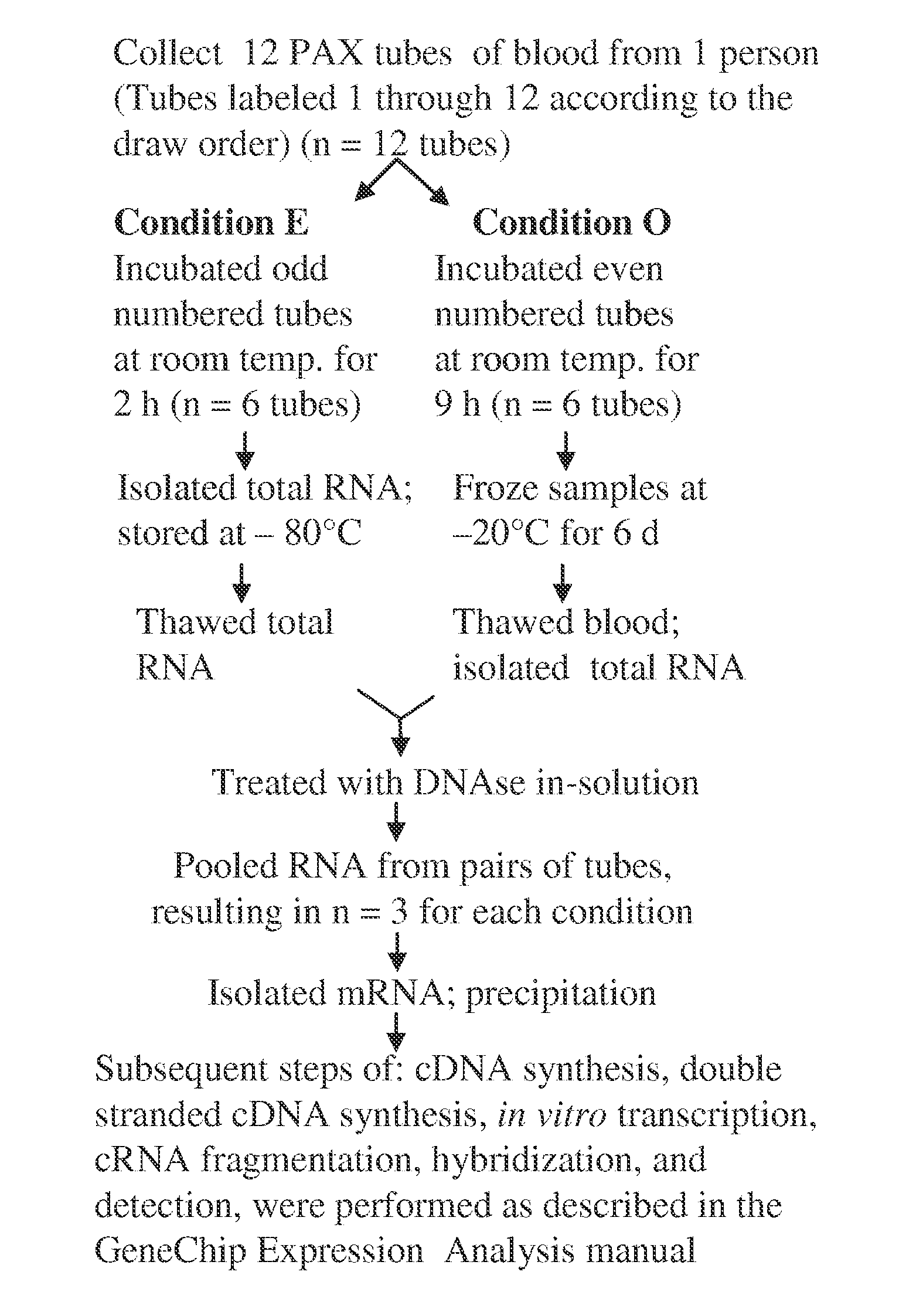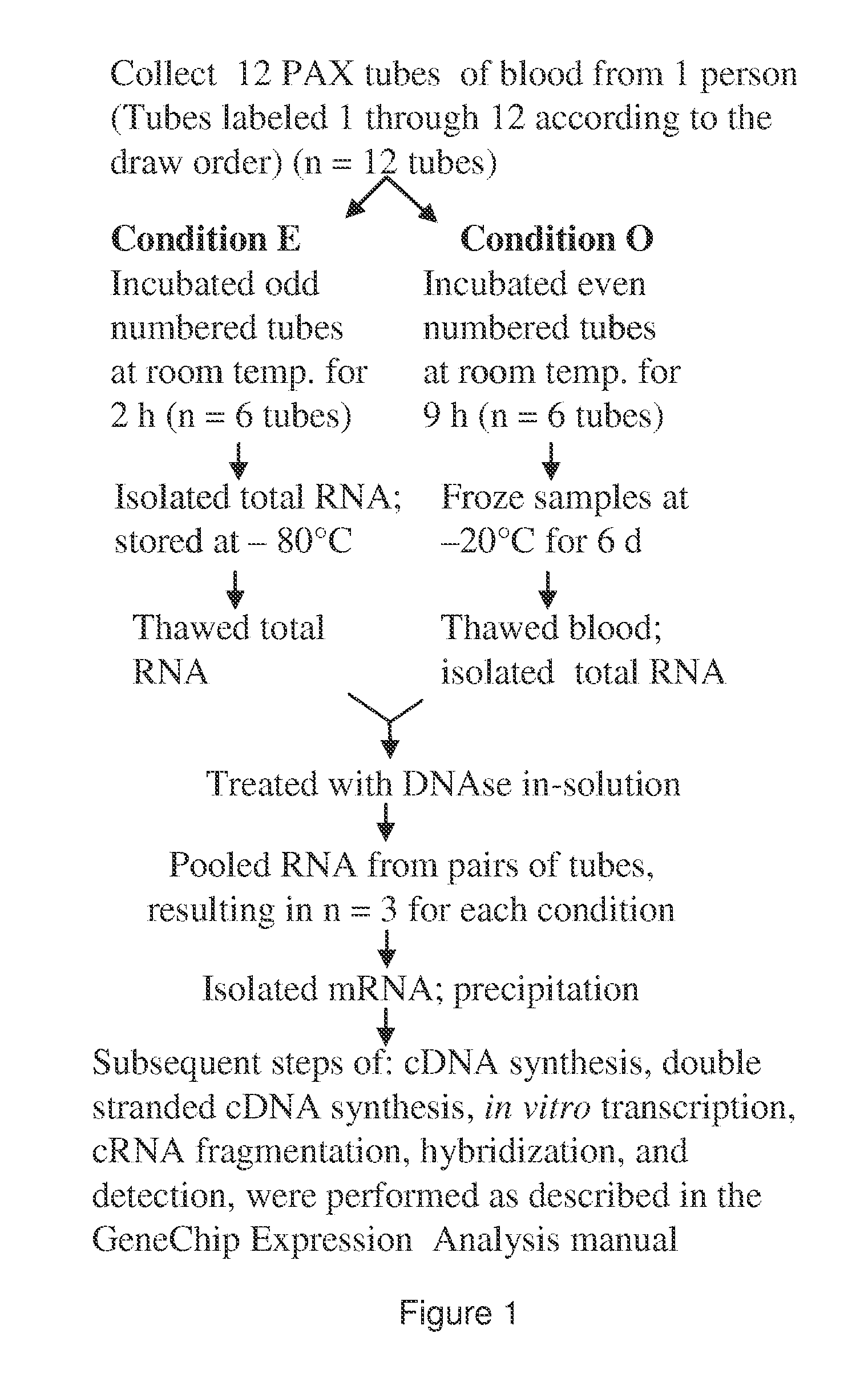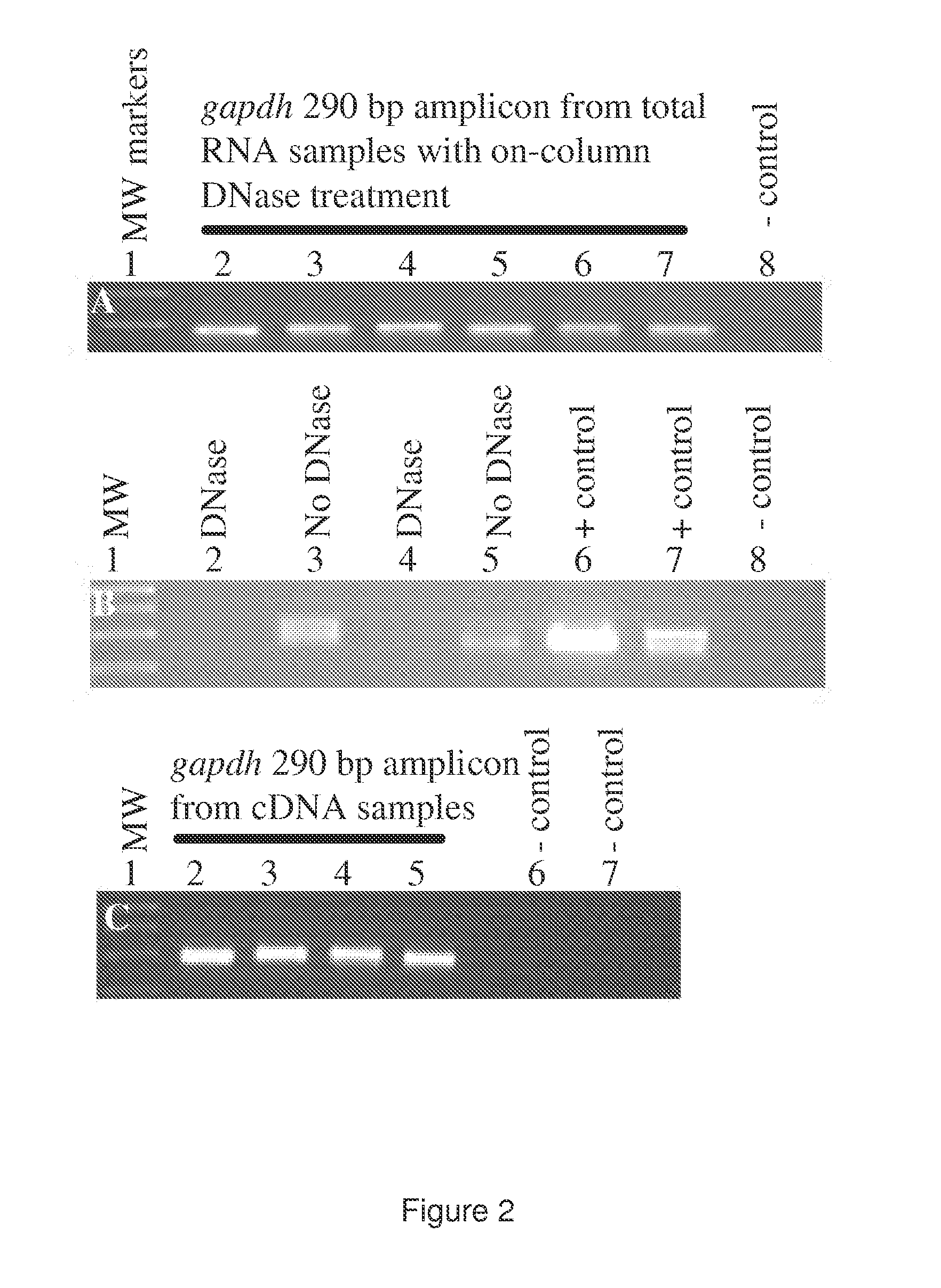Diagnosis and Prognosis of Infectious Disease Clinical Phenotypes and other Physiologic States Using Host Gene Expression Biomarkers In Blood
a technology of host gene expression and infectious disease, which is applied in the field of diagnostic and prognosis of infectious disease clinical phenotypes and other physiologic states using host gene expression biomarkers in blood, can solve the problems of inability to ascribe particular transcriptional sequences, and inability to make surveillance practical, so as to achieve a quick independent diagnosis and more robust prediction
- Summary
- Abstract
- Description
- Claims
- Application Information
AI Technical Summary
Benefits of technology
Problems solved by technology
Method used
Image
Examples
example 1
[0343]Lackland Air Force Base (LAFB) in San Antonio, Tex. is the location of Basic Military Training for all recruits to the United States Air Force. More than 50,000 Basic Military Trainees (BMTs) undergo a 6 week training course prior to assignment of duty. These BMTs are organized into flights of 50-60 individuals that eat, sleep and train in close quarters. Each flight is paired with a brother or sister flight with which there is increased contact due to co-localization for scheduled activities and multiple flights are grouped into squadrons which reside in the same dormitory building, subdivided into dorms for individual flights.
[0344]BMTs arriving to LAFB underwent informed consent to participate in this study. On day 1-3 of training, approximately 15 milliliters of blood were drawn from each BMT into a total of 5 Paxgene tubes, per standard protocol, to establish baseline gene expression profiles. BMTs who presented during training with a temperature of 100.5...
example 2
Materials and Methods
[0354]PAX tube blood collection. Blood was collected into the PAX tubes from volunteers according to the manufacturer's directions (60). For the experiment described in FIG. 1, twelve PAX tubes were collected from one person. Then, the tubes were split into two groups of six for the two conditions. Subsequently, RNA from pairs of tubes had to be pooled to obtain enough RNA for further processing. This resulted in three replicates in each condition.
[0355]Total RNA isolation. After sample collection, the PAX tubes were incubated at room temperature for 2 or 9 hours, followed by immediate total RNA isolation or freezing at −20° C. for 6 days before further processing. For total RNA isolation, we followed the PAX kit handbook (33), but with modifications to aid tight pellet formation after proteinase K treatment. Loose pellets were problematic. To form tight pellets, we increased the proteinase K added from 40 μl to 80 μl (>600 mAU / ml) per sample a...
example 3
GXP Program “Quad30” Experiments
Materials and Methods
[0383]Culture of adenovirus from nasal washes. All samples are cultured for Adenovirus, Parainfluenza 1,2, and 3, Influenza A and B and RSV. Standard cell types, including Rhesus Monkey Kidney-PMK or Cynomologous Monkey Kidney-CYN are most commonly used in addition to A549 cells. Standard culture and shell vial with direct fluorescent antibody are used. All respiratory cultures are held for 10-14 days until called negative.
[0384]Fluorogenic real-time PCR for adenovirus serotype 4 from nasal washes. DNA was extracted from 100 μl of nasal washes using the MasterPure™ DNA purification kit (Epicentre Technologies, Madison, Wis.) and resuspended in 10 μl nuclease free water (Ambion Inc., Austin, Tex.). Two different fluorogenic real-time PCR were used to detect adenovirus serotype 4 hexon and fiber genes. For hexon gene specific PCR, each reaction was 15 μl total volume containing 20 mM Tris-HCl (pH 8.4), 50 mM KCl, 4 mM MgCl2, 200 dNT...
PUM
| Property | Measurement | Unit |
|---|---|---|
| temperature | aaaaa | aaaaa |
| temperature | aaaaa | aaaaa |
| volume | aaaaa | aaaaa |
Abstract
Description
Claims
Application Information
 Login to View More
Login to View More - R&D
- Intellectual Property
- Life Sciences
- Materials
- Tech Scout
- Unparalleled Data Quality
- Higher Quality Content
- 60% Fewer Hallucinations
Browse by: Latest US Patents, China's latest patents, Technical Efficacy Thesaurus, Application Domain, Technology Topic, Popular Technical Reports.
© 2025 PatSnap. All rights reserved.Legal|Privacy policy|Modern Slavery Act Transparency Statement|Sitemap|About US| Contact US: help@patsnap.com



